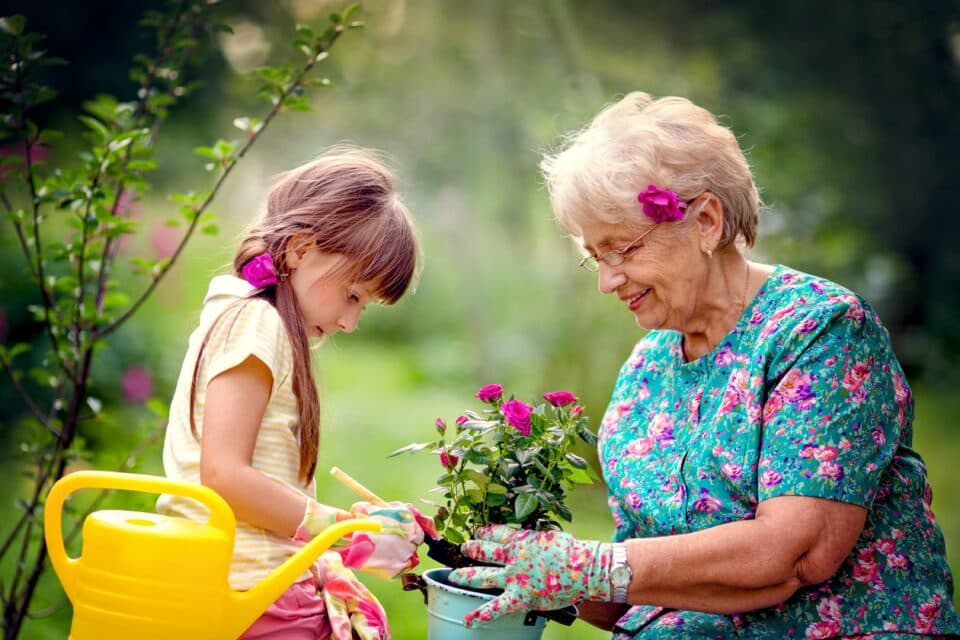
How a grandmother's brain reacts to the sight of her grandchildren
Grandmothers are important caregivers in many societies and can enrich the lives of their grandchildren with their love, kindness and knowledge. In modern societies, caregiving by engaged grandmothers has been associated with better outcomes for their grandchildren in terms of academic, social, behavioral and physical health parameters.
The brain functioning of healthy, older people has seldom been investigated, with more attention being paid to elucidating the neural problems related to dementia and other aging disorders. However, in a recent study scientists have, for the first time, scanned grandmothers’ brains while they looked at photos of their young grandchildren, in order to understand how brain activity may relate to the benefits that they bring to their families.
A total of 50 grandmothers with grandchildren between 3 and 12 years of age participated in the study. Functional magnetic resonance imaging (fMRI) was used to identify the areas of the brain that became active when they viewed pictures of a grandchild, an unknown child, the same-sex parent and an unknown adult.
In addition, the participating grandmothers completed questionnaires about their involvement as grandmothers, and provided details such as how much time they spent with their grandchildren, the activities they shared and how much affection they felt for them.
The results showed that viewing grandchild pictures activated areas involved with emotional empathy (insula and secondary somatosensory cortex) and movement (motor cortex and supplementary motor area) in the brains of the grandmothers.
“What really jumps out in the data is the activation in areas of the brain associated with emotional empathy,” said study lead author James Rilling, Emory professor of Anthropology. “That suggests that grandmothers are geared toward feeling what their grandchildren are feeling when they interact with them. If their grandchild is smiling, they’re feeling the child’s joy. And if their grandchild is crying, they’re feeling the child’s pain and distress.”
This was in contrast to the grandmothers’ neural responses to their adult child. When viewing images of their adult child, grandmothers showed stronger activation in areas of the brain associated with cognitive empathy (temporo-parietal junction and dorsomedial prefrontal cortex), indicating that they were trying to understand what their child was thinking or feeling, but from a cognitive (intellectual) rather than an emotional perspective.
“Young children have likely evolved traits to be able to manipulate not just the maternal brain, but the grand maternal brain,” said Professor Rilling. “An adult child doesn’t have the same cute ‘factor,’ so they may not illicit the same emotional response.”
“I can relate to this research personally because I spent a lot of time interacting with both of my grandmothers,” said study co-author Minwoo Lee. “I still remember warmly the moments I had with them. They were always so welcoming and happy to see me. As a child, I didn’t really understand why.”
“Here, we’re highlighting the brain functions of grandmothers that may play an important role in our social lives and development. It’s an important aspect of the human experience that has been largely left out of the field of neuroscience.”
Researchers in Professor Rilling’s lab focus on the neural basis of human social cognition and behavior. Although neural correlates of maternal behavior have been well studied by other neuroscientists, the Emory team has done novel research on the neuroscience of fatherhood, in addition to this new study on neural correlates of grandmaternal caregiving.
“We often assume that fathers are the most important caregivers next to mothers, but that’s not always true,” said Rilling. “In some cases, grandmothers are the primary helper.”
When compared with the brain activity shown by fathers who viewed photos of their children, grandmothers showed stronger activity in the brain regions involved with emotional empathy and motivation.
Grandmothers are important caregivers in many societies and previous research has shown that their involvement with the family may bring tangible evolutionary benefits. For example, a study of the traditional Hadza people of Tanzania, showed that foraging by grandmothers improved the nutritional status of their grandchildren. Another study of traditional communities showed that the presence of grandmothers decreases their daughters’ interbirth intervals and increases the number of grandchildren.
The neural evidence derived in this current study appears to support the hypothesis that that there is a global caregiving system in the brain, and that grandmothers are part of this system.
“Our results add to the evidence that there does seem to be a global parenting caregiving system in the brain, and that grandmothers’ responses to their grandchildren maps onto it,” said Professor Rilling.
Although the study has some limitations, such as the fact that only mentally and physically healthy grandmothers who were involved with their grandchildren took part, it does invite further research. “It would be interesting to also look at the neuroscience of grandfathers and how the brain functions of grandparents may differ across cultures,” said Lee.
Professor Rilling interviewed all the participants personally. “It was fun. I wanted to get a sense of the rewards and challenges of being a grandmother.” He stated that the main challenge many of them reported was trying not to interfere when they disagreed with the parents over how their grandchildren should be raised and what values should be instilled in them.
“Many of them also said how nice it is not to be under as much time and financial pressure as they were when raising their children. They get to enjoy the experience of being a grandmother much more than they did being parents.”
The study is published in the Proceedings of the Royal Society B.
—
By Alison Bosman, Earth.com Staff Writer












